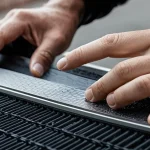Achieving Aesthetic Harmony Between Pools and Modern UK Architecture
Creating a seamless integration between pool design and contemporary UK architecture is essential for elevating the overall ambiance of a modern home. Unlike traditional pool placements, today’s designs emphasize visual cohesion to make outdoor spaces feel like natural extensions of the residence. To achieve this, pool features should carefully reflect the clean lines and minimalist forms frequently found in modern UK homes.
Key principles for aligning pools with modern home integration include selecting geometric shapes that mirror architectural lines and ensuring pool dimensions complement the building scale. Incorporating elements like glass fencing or metal finishes can echo construction materials used in the house, reinforcing a harmonious aesthetic. Additionally, positioning the pool to enhance sightlines and outdoor flow promotes a unified spatial experience.
Also to see : Enhance your uk home’s indoor pool with cutting-edge acoustic designs for a peaceful aquatic atmosphere
The benefits of this thoughtful integration extend beyond looks. A pool designed to blend seamlessly with contemporary UK architecture can significantly boost property value and curb appeal. Buyers increasingly appreciate outdoor spaces that feel purposeful and elegant rather than disparate or tacked on. By focusing on seamless outdoor spaces and cohesive pool design, homeowners invest in both immediate enjoyment and long-term asset growth. This approach makes the pool not just an amenity but a defining feature of the modern home’s character.
Selecting Materials and Finishes for a Unified Look
Materials play a crucial role in achieving cohesive design between pool areas and contemporary UK architecture. When selecting pool materials, the key is to complement the house’s exterior finishes to create a fluid visual connection. For modern home integration, consider surfaces and finishes that echo or enhance the textures used in building facades.
This might interest you : Revamp your uk pool’s atmosphere: the art of captivating led mood lighting
Commonly favored modern pool surfaces include natural stone, concrete, glass, and metal. Stone offers timeless elegance and works well with brick or rendered walls, while concrete introduces sleek, clean lines that suit minimalist designs. Glass fencing or panels provide transparency, maintaining sightlines and continuity between outdoor spaces. Metal finishes, such as stainless steel or powder-coated frames, harmonize with industrial or modern metal elements found on the home.
Matching pool coping and decking with architectural finishes reinforces aesthetic unity. For example, concrete coping matched with a home’s grey render ties the pool area to the building, while timber decking can soften hard edges and add warmth when paired carefully with metal accents. Thoughtful layering of textures and finishes ensures the pool design feels like an integral part of the home, rather than an afterthought.
Adopting these strategies creates seamless outdoor spaces, enhancing both the visual harmony and the overall appeal of modern UK residences. This alignment not only elevates the living experience but also supports long-term value by upholding a unified design ethos.
Creating a Harmonious Color Palette
Selecting the right pool color schemes is vital for achieving visual unity between pools and contemporary UK architecture. Contemporary colour trends favour muted, natural tones that complement rather than compete with the home’s exterior. Colours such as soft greys, slate blues, and earthy greens blend effortlessly into outdoor environments, supporting smooth modern home integration.
A key step is coordinating pool water and tiling colours with the house’s exterior palette. For example, pale stone tiles echoing light brickwork can create a subtle, elegant transition between pool and building. Similarly, deeper blue or charcoal pool linings work well alongside darker renders or metal finishes, enhancing cohesion without overwhelming the space.
Beyond the water, softscaping and hardscaping tones complete the palette. Choosing foliage with muted greens and warm taupe grasses pairs well with contemporary gardens, while decking in natural timber shades offers warmth and balance. These exterior design palette choices reinforce a seamless outdoor space, tying together architecture, pool, and landscaping.
This thoughtful approach to colour ensures the pool feels like an extension of the home, rather than a separate element. By selecting complementary hues, homeowners can enhance property appeal while creating a tranquil, sophisticated outdoor retreat.
Integrating Pool Shape and Layout with Architectural Lines
Careful selection of pool shapes is crucial for achieving modern home integration and reinforcing the clean geometry seen in contemporary UK architecture. Geometric pool designs—such as rectangles, squares, and sharp-edged forms—closely mirror architectural lines, creating a visual dialogue between the pool and the home’s structure. This alignment promotes seamless outdoor spaces by visually extending the home’s minimalist aesthetic into the garden.
Positioning plays an equally important role. Placing the pool parallel or perpendicular to key house angles maintains architectural coherence and optimizes sightlines. For example, a rectangular pool aligned with the back facade can anchor the outdoor space, drawing the eye smoothly from indoors to outdoors. This thoughtful layout encourages both functionality and aesthetic flow, improving usability while enhancing the property’s style.
Symmetry and geometry offer additional benefits. Symmetrically balanced pools flanked by matching decking or terraces echo the orderly, balanced nature of modern UK architecture. Meanwhile, garden planning should consider these shapes to ensure smooth transitions between poolside areas and planted zones, further reinforcing cohesion. Through strategic shape and layout decisions, the pool becomes an integrated architectural feature rather than a standalone element, boosting both visual harmony and overall property appeal.
Achieving Aesthetic Harmony Between Pools and Modern UK Architecture
Creating visual cohesion between pool design and contemporary UK architecture is fundamental for seamless outdoor spaces that feel unified and intentional. To align pool features with a modern home, designers focus on echoing the clean lines and minimalist forms typical of contemporary UK architecture. This means selecting pool shapes and dimensions that harmonize with the home’s structure rather than competing with it.
Key principles involve matching scale and proportion carefully. A pool too large or ornate can disrupt the architectural rhythm, while a modest, geometric pool complements modern aesthetics. Materials and finishes chosen for the pool area should reflect or enhance those used on the house. For example, glass fencing can mirror windowpanes, and stainless steel elements can reinforce sleek metalwork found in facades.
Thoughtful integration offers tangible benefits beyond appearance. A well-designed pool contributes to a cohesive outdoor lifestyle, enhancing usability by promoting smooth transitions between indoor and outdoor areas. This coherence also significantly boosts property value and curb appeal, as buyers and residents increasingly seek seamless outdoor spaces that feel like natural extensions of the home. Thus, marrying pool design with contemporary UK architecture not only elevates everyday enjoyment but also protects long-term investment value.
Achieving Aesthetic Harmony Between Pools and Modern UK Architecture
Visual cohesion between pool design and contemporary UK architecture is essential for creating truly seamless outdoor spaces. Achieving this harmony begins with understanding how pool features can mirror or complement modern home lines. Pools should reflect the clean, minimalist aesthetics typical of contemporary designs, avoiding ornate or overly complex shapes that interrupt visual flow.
Core principles for modern home integration include maintaining scale and proportion consistent with the house. A well-sized pool fits naturally within the garden, neither overpowering nor underwhelming the architecture. Materials and finishes are equally important; glass fencing or metal accents can echo architectural elements, reinforcing a coherent palette. Positioning the pool to align with primary building angles ensures smooth transitions and encourages movement through indoor and outdoor zones.
Thoughtful integration delivers tangible benefits. Beyond enhancing daily living, a pool that blends seamlessly with a modern home can increase curb appeal and bolster long-term property value. Buyers favor homes where outdoor features feel intentional and harmonious, rather than disjointed. Therefore, prioritizing visual cohesion between pool and architecture creates outdoor spaces that uplift the residence in both functionality and style.










